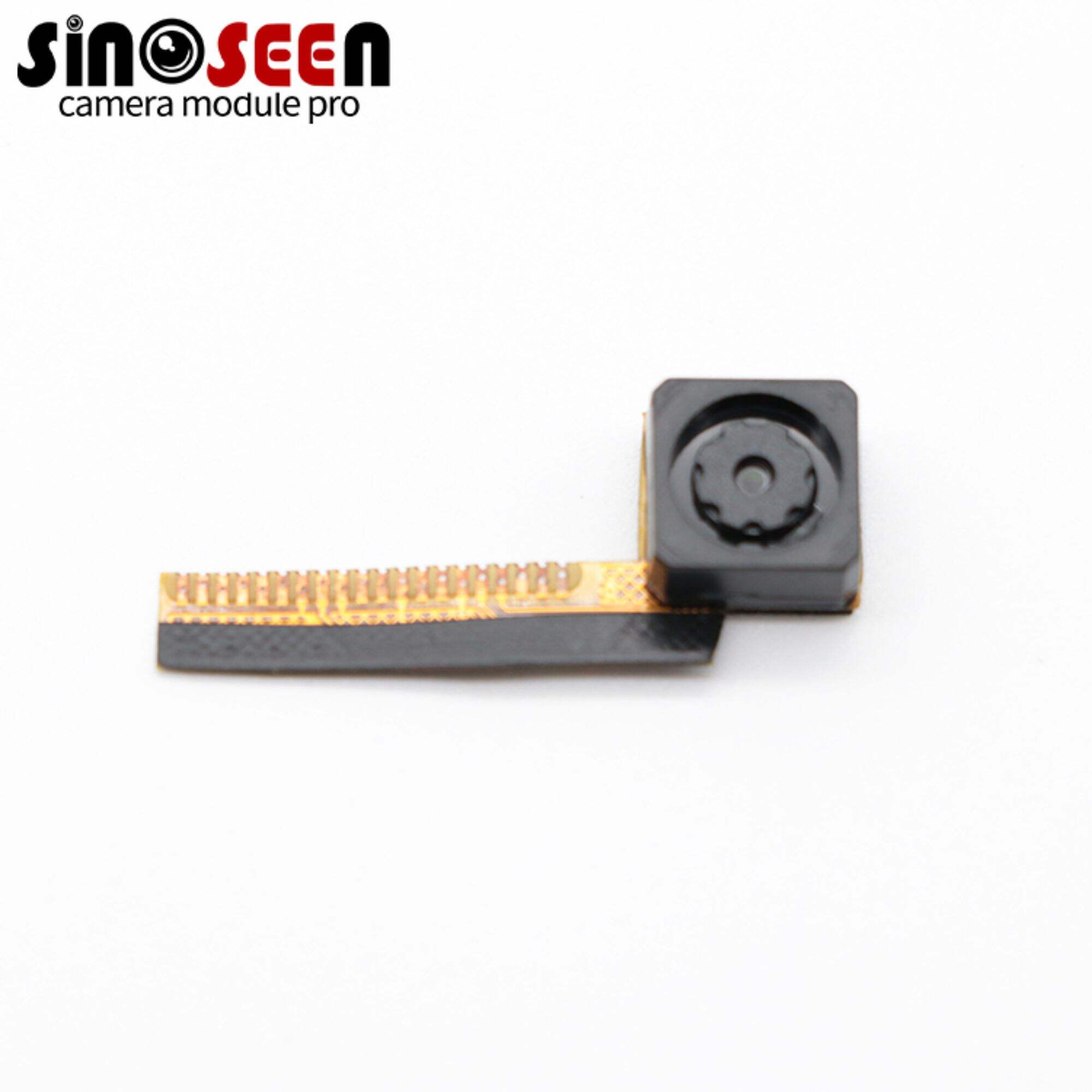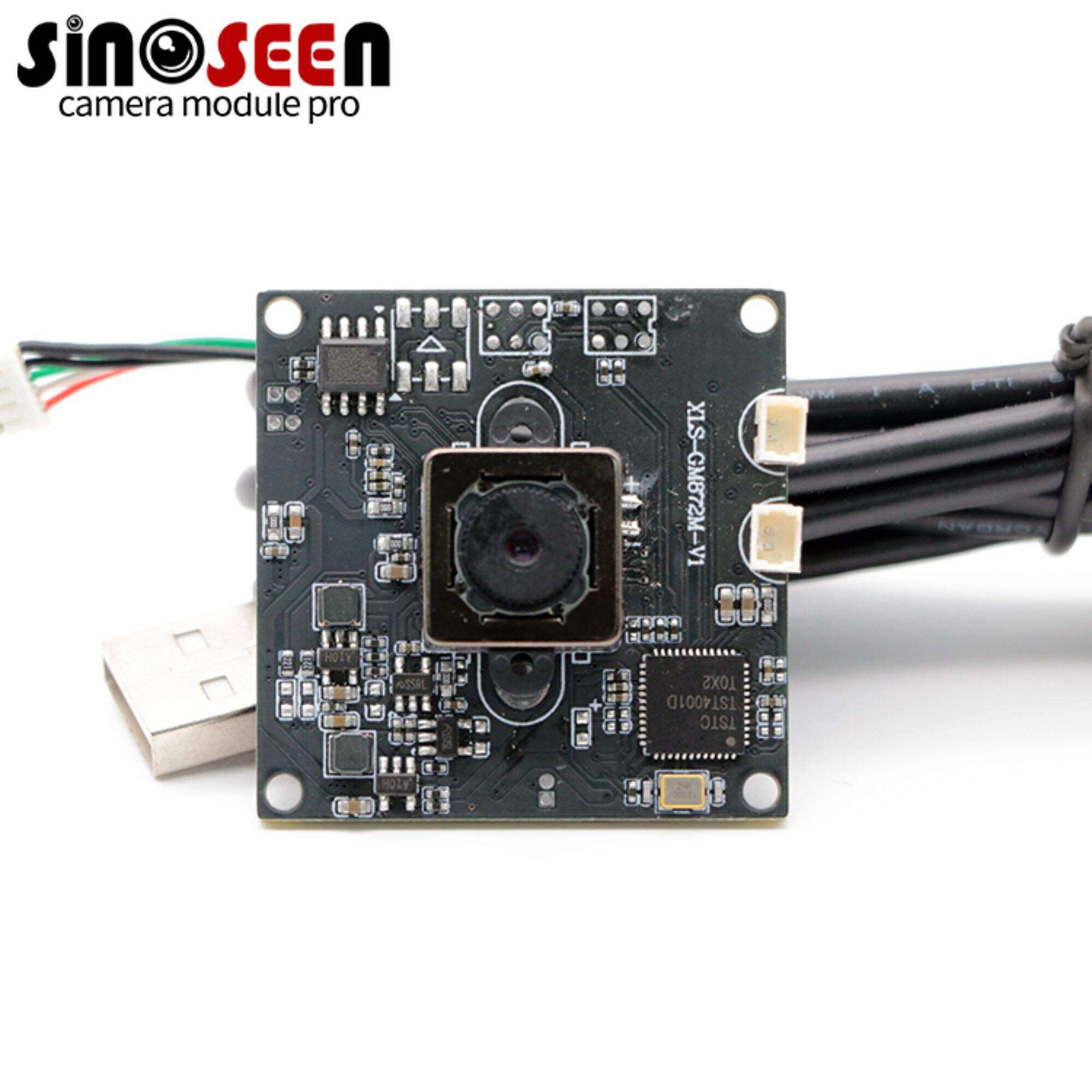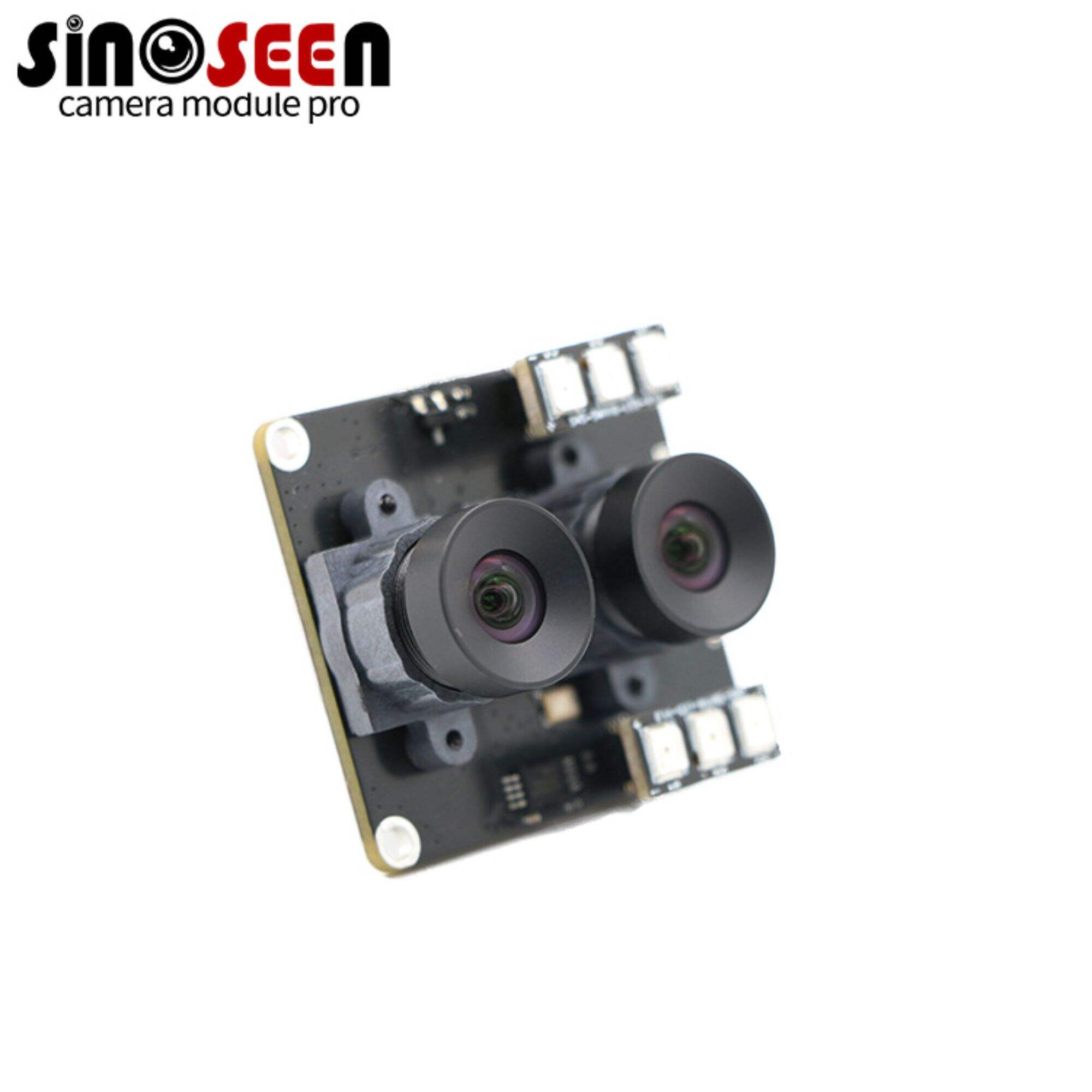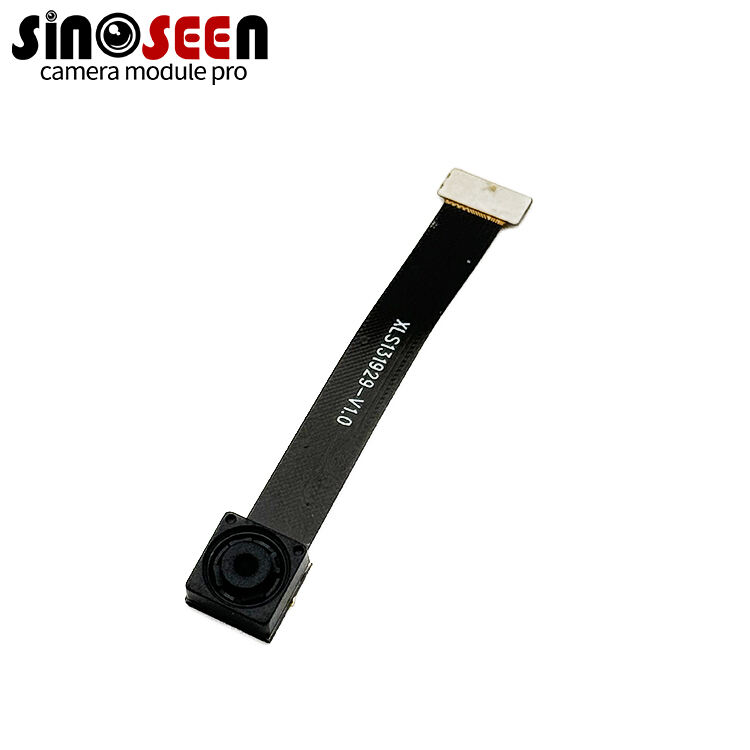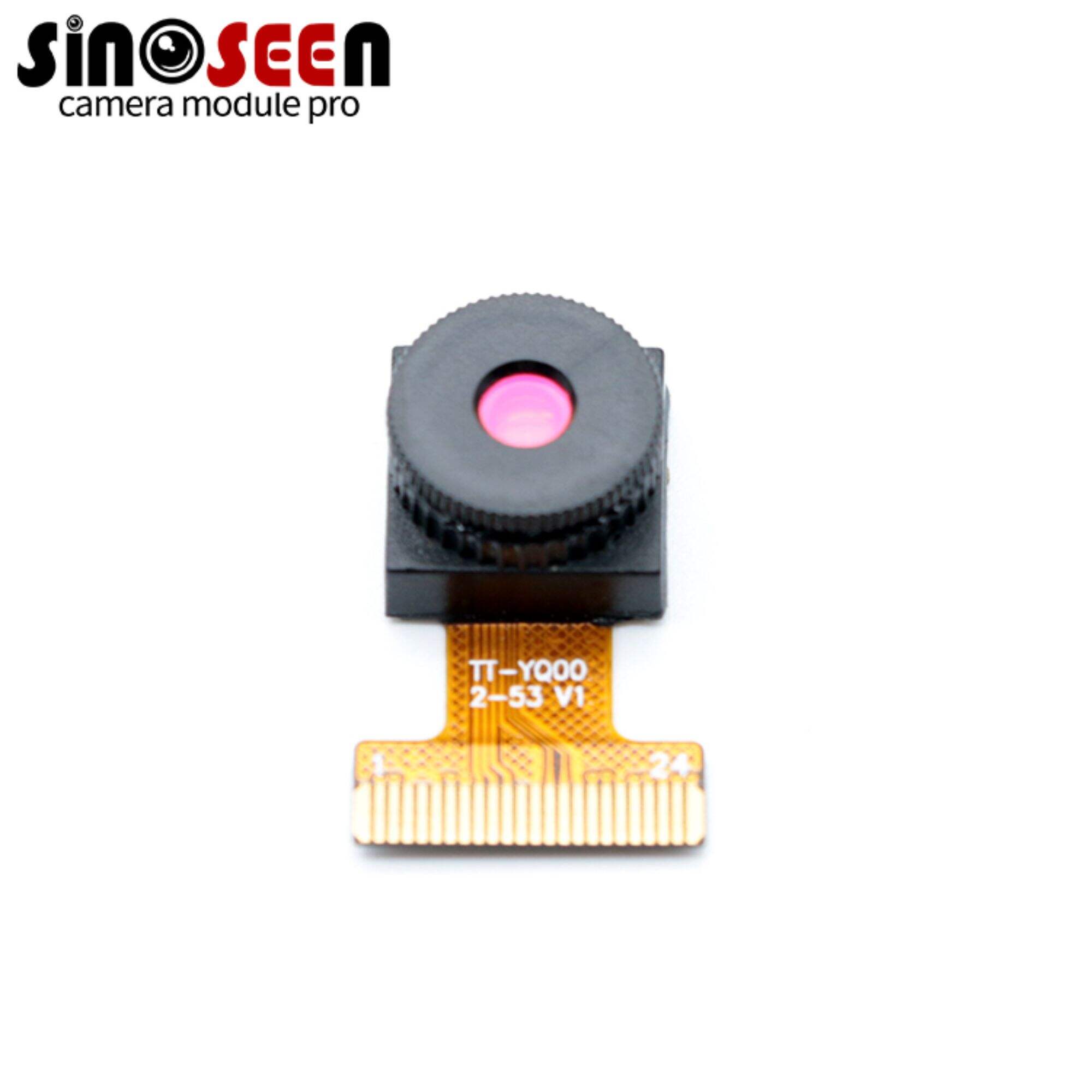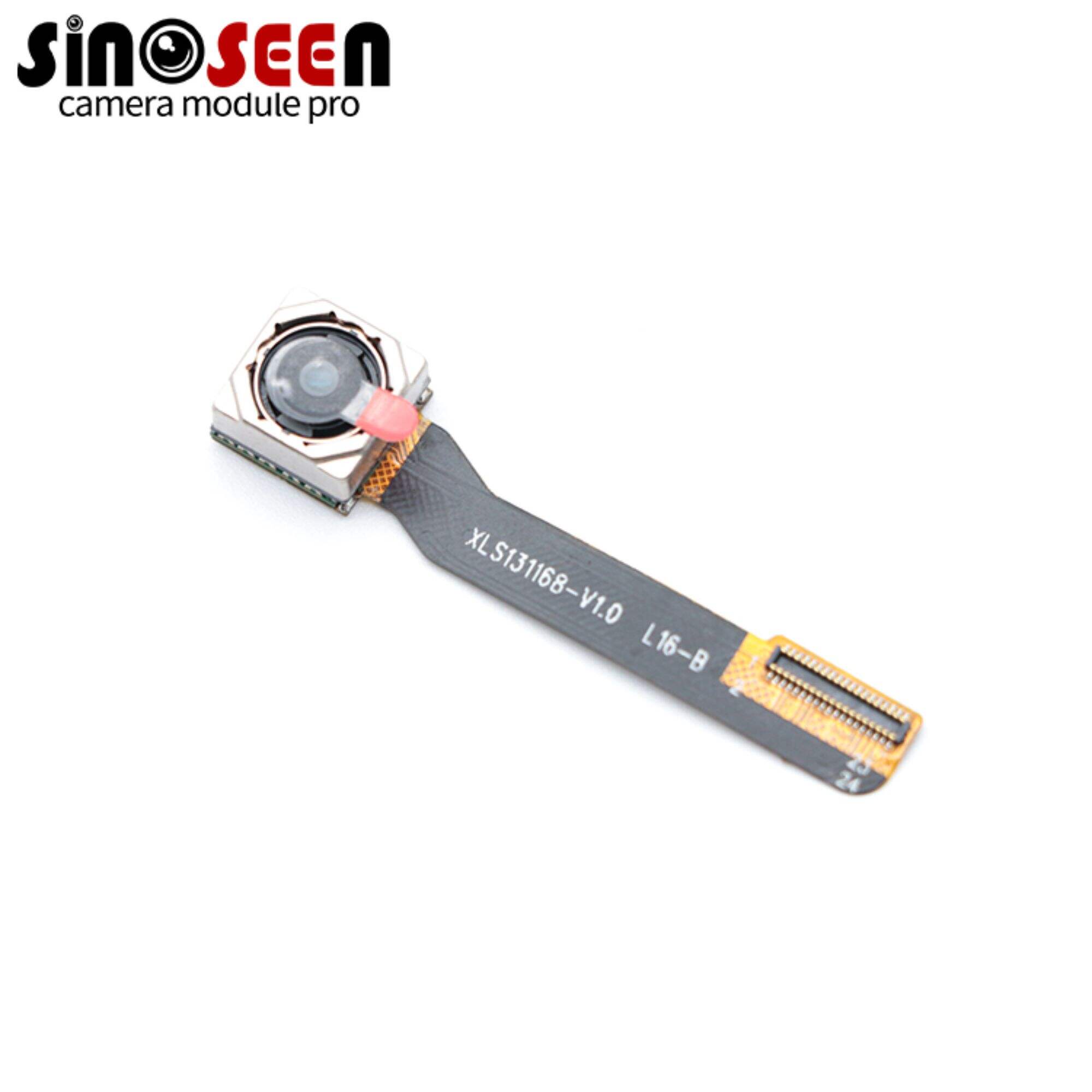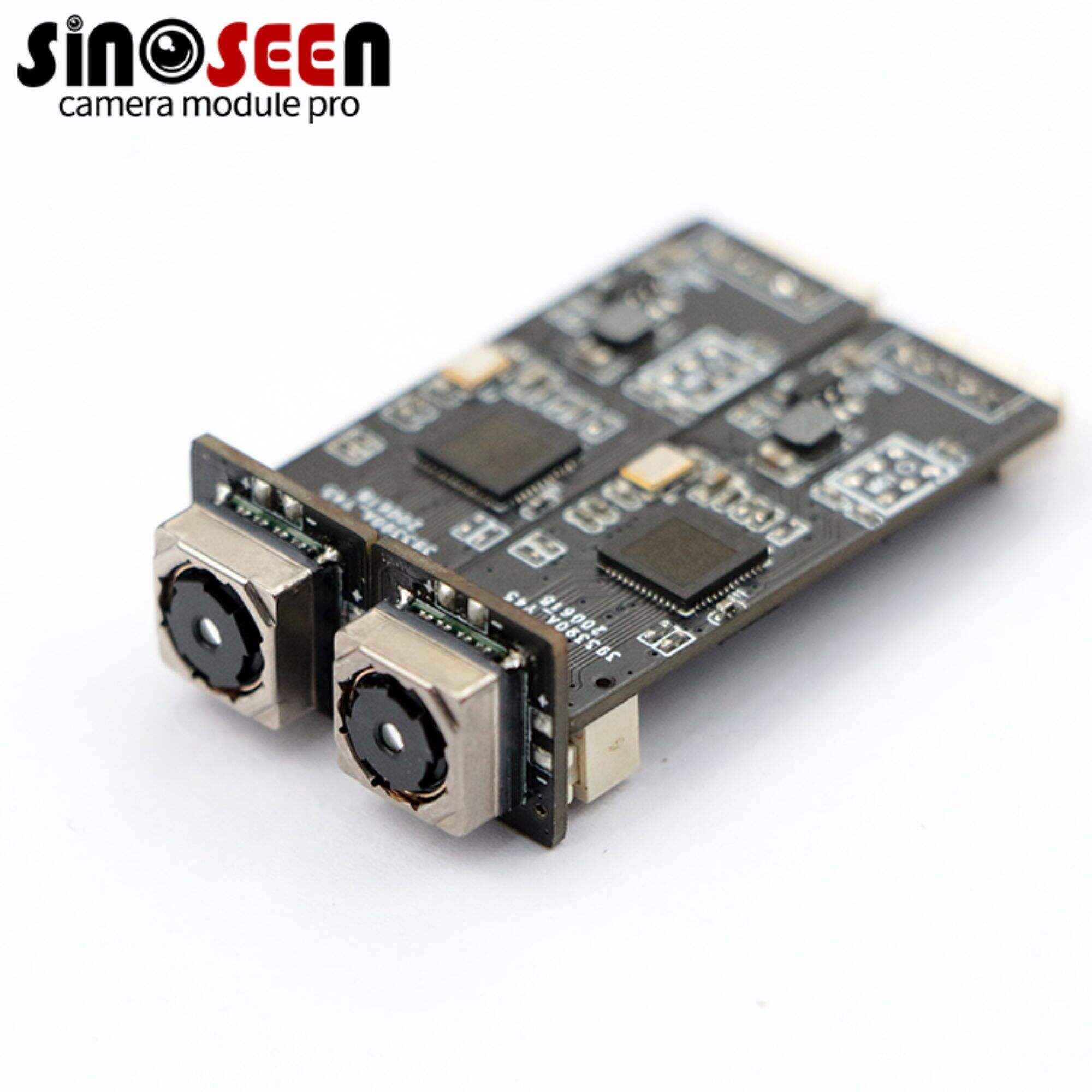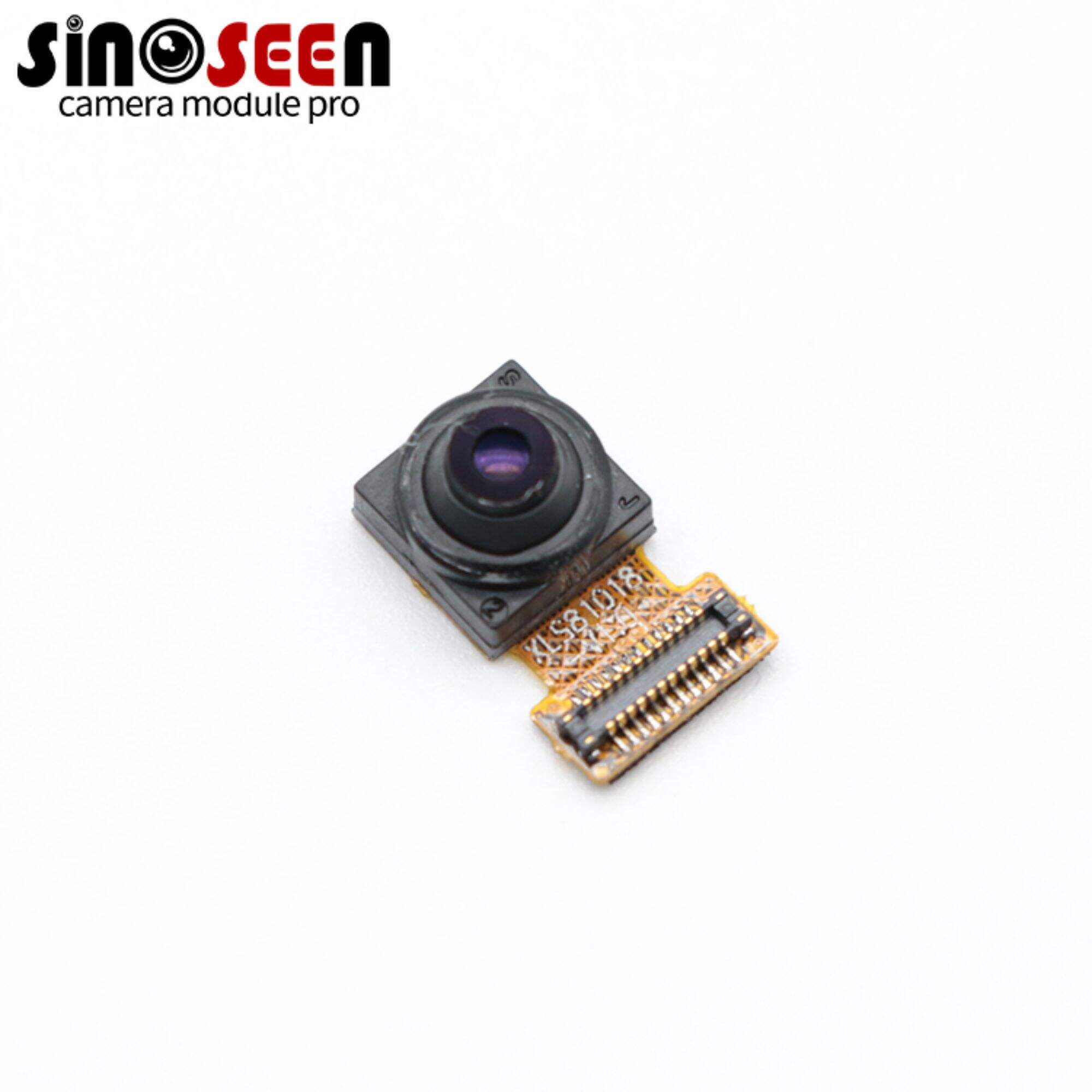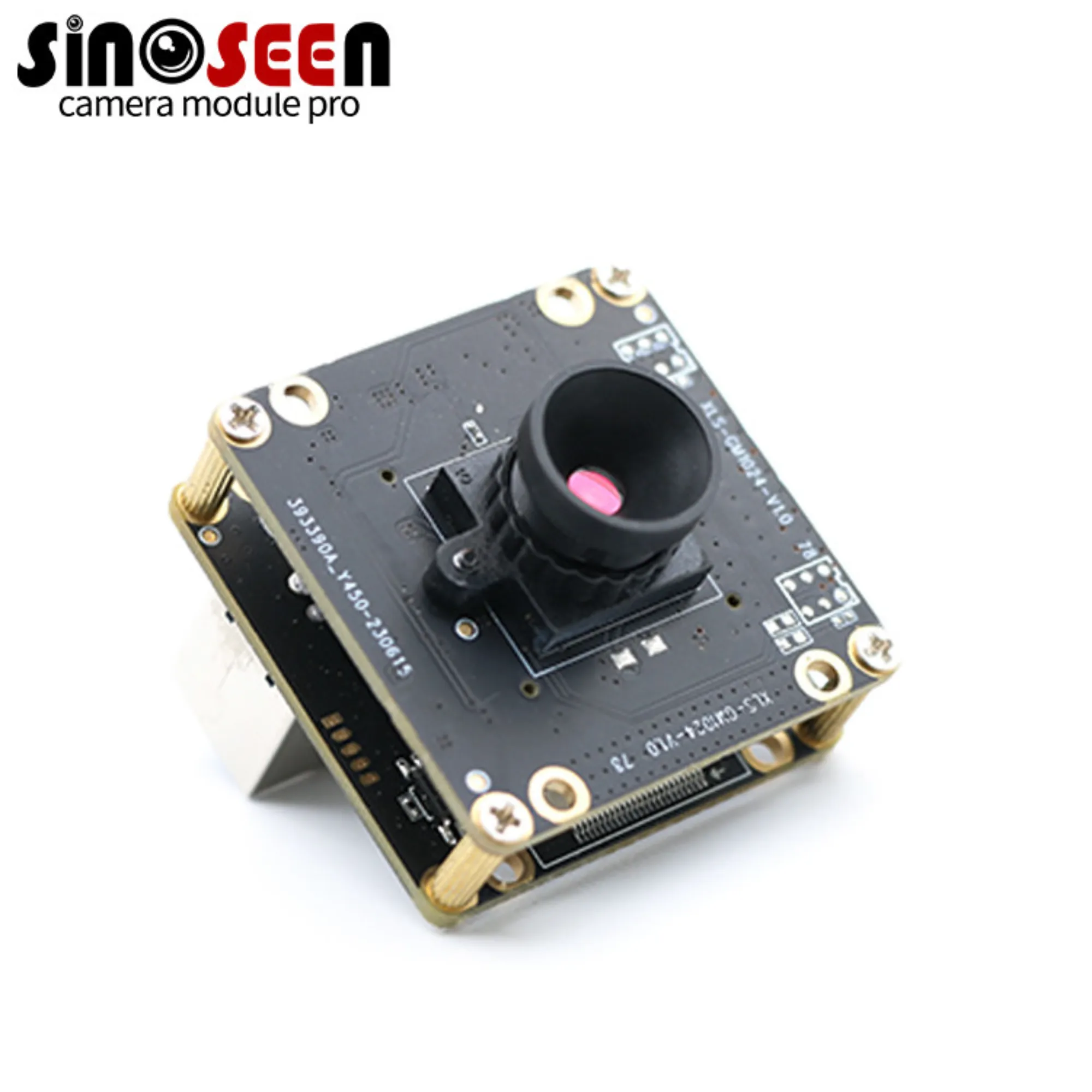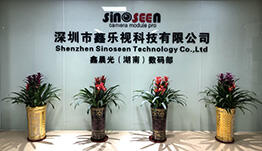چھوٹے شدہ آلات کے لیے کمپیکٹ کیمرہ ماڈیول کیوں منتخب کریں؟
جدید آلات میں ننھیا کرنے کی اہمیت
کم جگہ والے حل کے لیے بڑھتی ہوئی ضرورت
آج کل کی تیزی سے ترقی کرتی ہوئی ٹیکنالوجی کے تناظر میں، کمپیکٹ اور جگہ بچانے والی اشیاء کی مانگ اب تک کی سب سے زیادہ اہم ہے۔ ٹیکنالوجی میں تیز ترین پیش رفت نے خصوصاً صارفین کے الیکٹرانکس کے شعبے میں چھوٹے حجم کی اہمیت کو اجاگر کیا ہے۔ یہ رجحان اسمارٹ فونز، پہننے کی اشیاء، اور آئی او ٹی کی اشیاء کے شعبوں میں واضح نظر آتا ہے، جہاں پر تیار کنندہ گان کمپیکٹ اور پورٹیبل مصنوعات بنانے کی حدود کو آگے بڑھا رہے ہیں۔ مثال کے طور پر، چھوٹی چھوٹی اشیاء کے استعمال میں اضافہ ہو رہا ہے، جس کی تائید ان اعداد و شمار سے ہوتی ہے جو صارفین کی جانب سے جگہ بچانے والی ڈیزائنوں کو ترجیح دینے کی عکاسی کرتے ہیں۔ جیسے جیسے ترجیحات کمپیکٹ مصنوعات کی طرف منتقل ہو رہی ہیں، تیار کنندہ گان بھی ڈیزائنوں کو بہتر بنانے کی کوشش کر رہے ہیں تاکہ صارفین کی ضروریات کو پورا کیا جا سکے، اور کارکردگی میں کوئی کمی نہ آئے۔ کمپیکٹ ڈیزائن کی طرف رجحان صرف آسانی کا معاملہ نہیں، بلکہ اب یہ صارفین کی توقعات اور ٹیکنالوجی کی صلاحیتوں کے ساتھ قدم سے قدم ملا کر چلنے کی ضرورت بن چکی ہے۔
روایتی امیجنگ سسٹمز کے ساتھ چیلنجز
روایتی امیجنگ سسٹمز، جن کی بھاری ڈیزائن کی وجہ سے چھوٹے اور مختصر آلے بنانے کی کوشش میں کافی چیلنجز پیدا ہوتے ہیں۔ ان سسٹمز میں عموماً بڑے اور بھاری اجزاء شامل ہوتے ہیں جو کافی توانائی کا استعمال کرتے ہیں، جس کی وجہ سے انہیں چھوٹے حجم والے آلے میں استعمال کرنا عملی نہیں رہتا۔ صنعتی ماہرین کے مطابق، ان محدودیتوں نے کمپیکٹ کیمرے میں تحقیق و ترقی کو فروغ دیا ہے۔ کمپیکٹ کیمرہ ماڈیول ٹیکنالوجی، سائز اور توانائی کے استعمال کو کم کرنے والے حل تلاش کر رہی ہے۔ ایک کیس سٹڈی چھوٹے آلے میں روایتی امیجنگ سسٹمز کے اثرات کو ظاہر کرتی ہے، ان کے سائز اور غیر کارآمدی کی وجہ سے پیدا ہونے والی مشکلات کو اجاگر کرتے ہوئے۔ مثال کے طور پر، میٹالینس سسٹمز کی ترقی ان چیلنجز کو عبور کرنے میں ایک عظیم پیش رفت کی نمائندگی کرتی ہے، انتہائی پتلی حل فراہم کرتے ہوئے جو روایتی سسٹمز کی طرح کارکردگی کی سطح کو برقرار رکھتے ہیں۔ یہ ایجادیں روایتی امیجنگ سسٹمز کو کمپیکٹ ٹیکنالوجی فریم ورکس کے اندر نافذ کرنے سے وابستہ جسمانی اور لاجسٹک چیلنجز کا مقابلہ کرنے کے لیے نہایت اہم ہیں۔
کمپیکٹ کیمرہ ماڈیولز کے کور فوائد
تنگ جگہ کے لیے چھوٹا ڈھانچہ
کمپیکٹ کیمرہ ماڈیولز اپنے چھوٹے سائز کی بدولت قابل ذکر فوائد فراہم کرتے ہیں، جس کی وجہ سے انہیں ان اشیاء میں باآسانی ضم کیا جا سکتا ہے جہاں جگہ کی قدرتی قلت ہوتی ہے۔ یہ خصوصیت ڈیزائنرز کو زیادہ متعدد اور لچکدار پروڈکٹ ڈیزائنوں کی تخلیق کی اجازت دیتی ہے، جس سے تخلیقی خیالات اور کارکردگی میں اضافہ ہوتا ہے۔ ڈرون اور پہننے کی قابلیت رکھنے والی اشیاء اس چھوٹے ڈیزائن سے بہت فیض یاب ہوتی ہیں، کیونکہ ان میں کم وزن اور جگہ بچانے والے اجزاء کی ضرورت ہوتی ہے تاکہ کارکردگی اور استعمال کے فوائد کو زیادہ سے زیادہ کیا جا سکے۔ یہ چھوٹے سائز کی اہمیت مختلف ٹیکنالوجی شعبوں میں پیش رفت کو بڑھانے میں واضح نظر آتی ہے، جہاں چھوٹے ڈیزائنوں کی بدولت صارفین کی الیکٹرانکس اور دیگر شعبوں میں نئی امکانات پیدا ہوتی ہیں، جو چھوٹی اور کارآمد اشیاء کی بڑھتی ہوئی طلب کو پورا کرتی ہیں۔
لائٹ ویٹ ڈیزائن سے آلے کی نقل و حرکت میں آسانی میں اضافہ
کمپیکٹ کیمرہ ماڈیولز کی ہلکی ڈیزائن ڈیوائسز کی قابلیت لے جانے کو کافی حد تک بہتر بنا دیتی ہے، جو کہ مستقل طور پر صارف کے تجربے میں بہتری سے جڑی ہوتی ہے۔ صارفین قابلیت لے جانے والی ڈیوائسز کو واضح ترجیح دیتے ہیں، نقل و حرکت کی آسانی اور استعمال کے دوران آرام کی قدر کرتے ہیں، جس کے نتیجے میں مارکیٹ کی حرکیات متاثر ہوتی ہیں۔ وزن کو کم کرنے پر توجہ مرکوز کرنے والی سامان اور ڈیزائن کی تکنیکوں کو اپنانے سے، تاکہ وظائفی معیار کو برقرار رکھتے ہوئے، پیداواری ادارے اس خواہش کو مؤثر طریقے سے پورا کر سکتے ہیں۔ قابل ذکر بات یہ ہے کہ جدید ڈیزائن کی تکنیکیں یہ یقینی بناتی ہیں کہ یہ ماڈیولز ہلکے ہونے کے باوجود مسلسل استحکام رکھتے ہیں، اس طرح اسمارٹ فونز، پہننے کی قابل ڈیوائسز اور یہاں تک کہ آئی او ٹی ڈیوائسز جیسے شعبوں پر مثبت اثر ڈالتے ہیں، جہاں ہلکا پن متحرک استعمال اور صارفین کی خوشی کے مترادف ہو سکتا ہے۔
عالي تجزیہ تصاویر کے صلاحیتوں
کمپیکٹ کیمرہ ٹیکنالوجی میں پیش رفت نے امیجنگ کوالٹی کو بدل کر رکھ دیا ہے، اعلیٰ ریزولوشن کی صلاحیتوں کی فراہمی کے ذریعے جو روایتی امیجنگ سسٹمز کے مقابلے میں بہتر ہیں۔ یہ بہتری اعداد و شمار میں بھی نظر آتی ہے جو تصاویر کے ریزولوشن میں نمایاں بہتری کی رپورٹ کرتے ہیں، جس سے ان کی اہمیت انڈ یوزرز کے لیے بڑھ جاتی ہے جو واضح اور بہترین تصاویر کے متلاشی ہوتے ہیں۔ ماہرین کی رائے میں یہ پیش رفت انتہائی اہم ہے، جس نے صحت، سیکورٹی اور دیگر صنعتوں جہاں درست امیجنگ کی ضرورت ہوتی ہے، کے شعبوں میں مختلف درخواستوں کو ممکن بنایا ہے۔ کمپیکٹ کیمرہ ماڈیولز کی بڑھی ہوئی ریزولوشن اور بہتر امیجنگ کی صلاحیتیں ان کی مختلف شعبوں میں قبولیت میں کلیدی کردار ادا کر رہی ہیں، جس سے سازوسامان کے سازوں کو نئی درخواستوں اور ٹیکنیکل انضمام کی تلاش کا موقع مل رہا ہے۔
کمپیکٹ امیجنگ میں ٹیکنالوجیکل اختراعات
میٹا سورفیس آپٹکس کی تحریک
میٹا سورفیس آپٹیکس کمپیکٹ کیمرہ ماڈیولز میں لینس کے ڈیزائن میں انقلاب لارہی ہے، جو نانو سکیل کی ساخت میں مینی ایچر اور فنکشنلٹی میں تبدیلی کے اثرات پیدا کررہی ہے۔ یہ نوآورانہ آپٹیکس نانوسکیل سٹرکچرز کے ساتھ تیار کردہ فلیٹ سطحوں کا استعمال کرتی ہیں جو روشنی کو درست طریقے سے مینیولیٹ کرتی ہیں۔ یہ نئی ٹیکنالوجی آپٹیکل کارکردگی کو بہتر بناتی ہے، بہترین تصویر کلیریٹی فراہم کرتی ہے جبکہ لینس کے سائز کو کافی حد تک کم کردیتی ہے - کمپیکٹ ڈیزائن کے لیے ضروری عناصر۔ مثال کے طور پر، میٹا سورفیس آپٹیکس روایتی لینسوں کے مماثل تصویر کی کوالیت حاصل کرسکتی ہیں لیکن بہت چھوٹے سائز میں، جس کی عکاسی میٹرکس سے ہوتی ہے جو رزولوشن میں اضافہ اور کرومائیٹک ابیریشن میں کمی دکھاتی ہے۔ جیسے جیسے تحقیق آگے بڑھ رہی ہے، میٹا سورفیس آپٹیکس میں ممکنہ ترقیات مزید نانو سکیل اور انضمام کی صلاحیتوں کی نشاندہی کرتی ہیں، جس سے کمپیکٹ امیجنگ میں ایک نیا دور شروع ہوگا جہاں زیادہ کارکردگی چھوٹے فارم فیکٹرز کے ساتھ ساتھ ہوگی۔
فولڈڈ لینس سسٹم آرکیٹیکچر
فولڈڈ لینس سسٹم کی آرکیٹیکچر ایک جدید ترکیب ہے جو تصویر کی کوالٹی کو متاثر کیے بغیر جگہ بچاتی ہے، جو کمپیکٹ کیمرہ ماڈیولز کے لیے انتہائی موزوں ہے۔ پرزم یا آئینوں کے ذریعے آپٹیکل راستہ فولڈ کرکے، یہ سسٹم زبردست لینسوں کو بے حد پتلی ڈیوائس پروفائلز میں فٹ کر سکتے ہیں، جیسا کہ موجودہ اسمارٹ فونز میں دیکھا جاتا ہے۔ یہ جدید ترکیب روایتی لینسوں کی کارکردگی کو برقرار رکھتی ہے، کمپیکٹ ڈیوائسوں پر ہائی کوالٹی امیجنگ کو یقینی بناتی ہے۔ اس طرح کی آرکیٹیکچر کی مثالوں میں فولڈڈ لینسوں کو استعمال کرتے ہوئے اسمارٹ فونز کی ایڈوانسڈ زوم صلاحیتوں کو بڑھانا شامل ہے، جو تصویر کے شاندار حصول کے ساتھ صارفین کے تجربے کو بہتر کرتا ہے۔ چونکہ یہ ٹیکنالوجی مقبولیت حاصل کر رہی ہے، اس لیے متوقع ہے کہ مزید ڈیوائسز فولڈڈ لینس سسٹم کو اپنانے لگیں گی، جو کمپیکٹ، ہائی پرفارمنس امیجنگ حل کو ترجیح دینے والے صنعتی رجحانات کو ظاہر کرے گی۔
ذہانتی امیج بہتری
مصنوعی ذہانت (AI) کیمروں کے کمپیکٹ ماڈیولز میں تصاویر کی کاریگری کو بہتر بنانے میں اہم کردار ادا کرتی ہے، جو تصویری ٹیکنالوجی میں ایک بڑی پیش رفت کی عکاسی کرتی ہے۔ AI الخوارزمیز کو تصویر کی کوالٹی کو بہتر بنانے کے لیے مسلسل ضم کیا جا رہا ہے، جس میں مشین لرننگ کا استعمال دینے کے لیے سیٹنگز کو گتیشیل انداز میں تبدیل کیا جاتا ہے۔ اعداد و شمار سے پتہ چلتا ہے کہ تصویر کی ریزولوشن اور صفائی میں بہتری آئی ہے، جس کا مظاہرہ ان آلاؤں نے کیا جو نویز کو کم کرنے اور تفصیلات کو بہتر بنانے کے لیے AI کا استعمال کرتے ہیں۔ کیس مطالعات ان پیش رفتوں کو اجاگر کرتے ہیں، جس میں صارفین کے تجربے میں واضح فرق دکھایا گیا ہے، خصوصاً کم روشنی والے حالات میں۔ آنے والے وقت میں، کمپیکٹ امیجنگ میں AI کی صلاحیت بے پناہ ہے۔ ہمیں توقع ہے کہ AI مزید ایجادات کو فروغ دے گی، جس سے پیچیدہ کمپیوٹیشنل فوٹوگرافی اور ذہین تصویری ایڈجسٹمنٹس ممکن ہوں گے، جو کمپیکٹ کیمرہ ٹیکنالوجی میں ممکنہ حدود کو آگے بڑھائیں گے۔
کم سائز والی ڈیوائسز میں اہم درخواستیں
ڈرون اور روبوٹکس
کمپیکٹ کیمرہ ماڈیولز ڈرون اور روبوٹکس میں ایک اہم جزو بن چکے ہیں، جو نگرانی، تصویر کشی اور راستہ ڈھونڈنے کے کاموں کے لیے بنیادی حمایت فراہم کرتے ہیں۔ ان ماڈیولز کی چھوٹی شکل نے نئی صلاحیتوں کو کھول دیا ہے، جس سے جگہ کو میپ کرنے اور ڈیوائس پر وزن کے اضافے کے بغیر اعلیٰ ریزولوشن والی تصاویر حاصل کرنے میں درستگی آئی ہے۔ خاص طور پر، کمپیکٹ کیمرہ سے لیس ڈرون کا استعمال زراعت اور ماحولیاتی نگرانی میں جدید نگرانی کے لیے بڑھ رہا ہے، جس سے پیداوار اور کارکردگی میں اضافہ ہو رہا ہے۔ اسی طرح، روبوٹکس ان چھوٹے کیمرے کو بہتر رینج کے لیے استعمال کرتا ہے، جس سے خودکار راستہ ڈھونڈنے اور رکاوٹ کا پتہ لگانے جیسے پیچیدہ کاموں کی اجازت ملتی ہے۔ مارکیٹ کی اعداد و شمار کے مطابق، ان صنعتوں میں کمپیکٹ کیمرہ ماڈیولز کو اپنانے کی شرح تیز ہو رہی ہے، اور 2024 سے 2028 کے درمیان ڈرون مارکیٹ میں 5.5 فیصد کی سالانہ مرکب نمو کی توقع ہے۔ یہ اضافہ مواصلات اور آپریشنل عملوں میں مزید چھوٹی امیجنگ ٹیکنالوجیز کو ضم کرنے کے مثبت رجحان کی نشاندہی کرتا ہے۔
طبی داخلہ نگاری/تشخیص
کمپیکٹ کیمرہ ماڈیولز طبی داخلہ نگاری اور تشخیص کے شعبوں میں انقلاب لارہے ہیں، اس کم تعمیری طبی کارروائیوں کو فروغ دے رہے ہیں جو مریضوں کے نتائج کو کافی حد تک بہتر کرتے ہیں۔ تصویری اوزاروں کے سائز کو کم کرنے سے طبی ماہرین اہم جانچوں کو کم تکلیف اور خطرے کے ساتھ انجام دے سکتے ہیں، تشخیص کی درستگی اور کارآمدگی کو بڑھاتے ہیں۔ طبی تصویری ٹیکنالوجی کی ترقی نے اعلیٰ درجہ برسٹی اور وضاحت فراہم کرنے والے ماڈیولز متعارف کرائے ہیں، جو کولونوسکوپی اور گیسٹروسکوپی جیسی کارروائیوں کے دوران تفصیلی مناظر کو ریکارڈ کرنے کے لیے ناگزیر ہیں۔ ان کمپیکٹ تصویری نظاموں کے فوائد کو طبی دیکھ بھال کے ماحول میں ان کے اطلاق کو فروغ دینے کے لیے قانون ساز اداروں نے بھی تسلیم کیا ہے۔ حالیہ رجحانات کمپیکٹ تصویری اطلاقات کے لیے تحقیق و ترقی میں سرمایہ کاری میں اضافہ کو ظاہر کرتے ہیں، جو محفوظ اور تیز طبی تشخیص کی ضرورت کے باعث ہوتا ہے، اس اہم شعبے میں مسلسل نمو کا مظاہرہ کرتے ہوئے۔
AR/VR ہیڈسیٹس اور اسمارٹ چشمے
واقعیت مزیلہ (AR) اور مصنوعی واقعیت (VR) کی دنیا میں، غوطہ خوری کے تجربات پیدا کرنے کے لیے کمپیکٹ کیمرہ ماڈیولز ناگزیر ہیں جو ان ٹیکنالوجیز کی وضاحت کرتے ہیں۔ یہ ماڈیولز مزیلہ اور مصنوعی ماحول کو بے عیب طریقے سے ظاہر کرنے کے لیے درکار دقیق ٹریکنگ اور تصویر کیپچرنگ میں حصہ ڈالتے ہیں۔ مثال کے طور پر، اسمارٹ گلاسز یہی اعلیٰ کمپیکٹ ماڈیولز استعمال کرتے ہیں تاکہ ڈیجیٹل اوور لےز کے ساتھ حقیقی دنیا کی تصاویر کو یکجا کیا جا سکے، صارفین کو روزمرہ کے کاموں یا پیشہ ورانہ سرگرمیوں کو بہتر بنانے کے لیے مزیلہ ڈیٹا فراہم کرے۔ اس کے علاوہ، ان کیمرے کی ہلکی نوعیت VR ہیڈ سیٹس کی سہولت اور پہننے کی آسانی میں کافی حد تک حصہ ڈالتی ہے، معیار کو متاثر کیے بغیر طویل استعمال کی اجازت دیتی ہے۔ چونکہ AR/VR آلات کی مقبولیت میں اضافہ ہوتا جا رہا ہے، مارکیٹ کے رجحانات سے پتہ چلتا ہے کہ صارفین کے اپنانے کی شرح میں اضافہ ہو رہا ہے، اس بات کی وجہ سے کہ تصویری ٹیکنالوجیز میں بہتری آئی ہے جو کمپیکٹ کیمرہ ماڈیولز کی سہولت فراہم کرتے ہیں، تفریح، تعلیم اور تجارت کے شعبوں میں غوطہ خوری پلیٹ فارمز کے لیے مضبوط مستقبل کا عندیہ دیتے ہیں۔
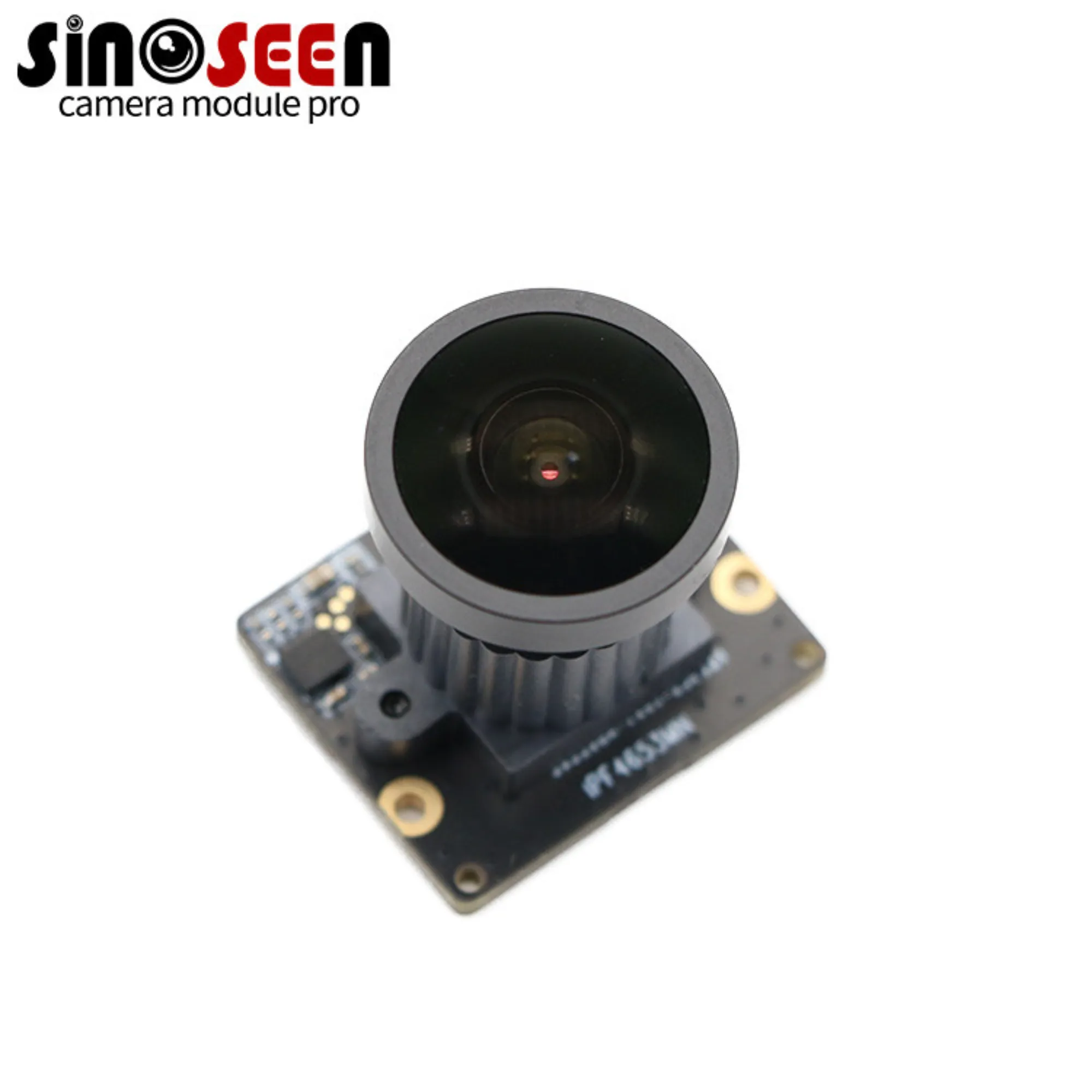
بے لچک کے بغیر کارکردگی
رنگینی غلطیوں پر قابو پانا
رنگینی غلطیاں، جنہیں کلر فرنجنگ کے نام سے بھی جانا جاتا ہے، تب پیدا ہوتی ہیں جب روشنی کے مختلف رنگ ایک ہی مرکزی سطح پر جمع نہیں ہوتے، جس کے نتیجے میں تصویر کے کناروں پر رنگوں کی بگڑی ہوئی گُنیت کے باعث تصویر کی معیار متاثر ہوتی ہے۔ کمپیکٹ کیمرہ ماڈیولز میں، یہ مسئلہ ڈرون، ایکشن کیمرے، اور طبی آلات جیسی درخواستوں کے لیے ضروری تفصیلی تصاویر کو نقصان پہنچا سکتا ہے۔ حالیہ ایجادوں نے اس چیلنج کا بہتر طریقے سے مقابلہ کیا ہے، روشنی کے راستوں کو درست انداز میں ہم آہنگ کرنے کے لیے اعلیٰ لینس کوٹنگز اور سینسر ٹیکنالوجیز کا استعمال کرکے۔ ان بہتریوں نے تصویر کی معیاری اقدار میں کافی اضافہ کیا ہے، صارفین نے اس کے نفاذ کے بعد واضح، تیز تر تصاویر اور بہتر رنگ وفاداری کی اطلاع دی ہے۔ مثال کے طور پر، اعداد و شمار ظاہر کرتے ہیں کہ ایسی ٹیکنالوجیکل اپ ڈیٹس کے بعد کناروں کی تفصیل کی وضاحت میں 30 فیصد اضافہ ہوا۔
پاور کی کارکردگی اور حرارتی انتظام
کمپیکٹ کیمرہ ماڈیولز میں طاقت کی کارکردگی نہایت اہمیت رکھتی ہے، خصوصاً پورٹیبل، بیٹری سے چلنے والے آلات جیسے ڈرون اور AR/VR ہیڈسیٹس میں۔ جدت کی ٹیکنالوجیز نے توانائی استعمال کی شرح میں نمایاں بہتری لائی ہے۔ مثال کے طور پر، نئے سینسر ڈیزائن اور توانائی کے کارآمد پروسیسرز پچھلی نسل کے مقابلے میں بجلی کے استعمال کو 50 فیصد تک کم کر سکتے ہیں۔ مؤثر حرارتی انتظام بھی ایک اہم کردار ادا کرتا ہے، یہ یقینی بناتے ہوئے کہ آلات زیادہ گرم ہوئے بغیر بہترین طریقے سے کام کریں، اس طرح نظام کی استحکام اور کارکردگی برقرار رہتی ہے۔ جب ان سخت ماحول کی طرف دیکھیں جہاں ان خصوصیات کی ضرورت ہوتی ہے، اس قسم کی پیش رفت یقینی طور پر طویل آپریشنل وقت اور آلات کی بہتر برداشت کو یقینی بناتی ہے۔
معاونت کے مطلوبہ محیطات میں
سخت حالات جیسے درجہ حرارت کی سخت حد اور جسمانی دھچکے کو برداشت کرنے کے لیے کمپیکٹ کیمرہ ماڈیولز کی تعمیر کرنا ان کی مضبوط کارکردگی کے لیے ضروری ہے۔ فضائی سفر اور پانی کے نیچے کی تحقیق جیسی صنعتوں کو مسلسل پائیدار امیجنگ سسٹمز پر انحصار ہوتا ہے، اور کیس مطالعات سے ان قطاعات میں ان کی کامیابی کا ثبوت ملتا ہے، حقیقی دنیا کے ماحول میں ان کی مؤثر کارکردگی کی تصدیق ہوتی ہے۔ ٹیکنالوجیز جیسے کہ مضبوط شیشہ اور مضبوط باہری ڈھانچے ان ڈیوائسز کو زیادہ سختی سے استعمال کرنے اور ناگوار حالات کو برداشت کرنے کی اجازت دیتے ہیں، ان کی کارکردگی متاثر نہیں ہوتی۔ سرٹیفیکیشنز اور سخت ٹیسٹنگ کی کارروائیاں ان نظاموں کی مضبوطی کی تصدیق کرتی ہیں، یہ یقینی بناتے ہوئے کہ یہ مشکل ماحول کی سخت ضروریات کو پورا کریں گے اور اعلیٰ معیار کی تصویری پیداوار برقرار رکھیں گے۔
اکثر پوچھے گئے سوالات
جدید الیکٹرانکس میں صغرویت کیوں ضروری ہے؟
سگرویت اس لیے اہم ہے کیونکہ یہ ساز و سامان کو کمپیکٹ اور قابلِ حمل بنانے کی اجازت دیتی ہے، جبکہ اس کی کارکردگی برقرار رہتی ہے، صارفین کی جانب سے جگہ بچانے والی مصنوعات کی طلب کو پورا کرنا۔
کمپیکٹ کیمرہ ماڈیولز کیا ہیں؟
کمپیکٹ کیمرہ ماڈیولز چھوٹے، ہائی ریزولوشن کیمرے ہوتے ہیں جنہیں مختلف آلات میں ضم کیا جا سکتا ہے، جو تنگ جگہوں پر بھی اعلیٰ معیار کی تصویریں بنانے کی اجازت دیتے ہیں۔
میٹا سورفیس آپٹیکس کمپیکٹ کیمرہ ماڈیولز کو کس طرح فائدہ پہنچاتی ہے؟
میٹا سورفیس آپٹیکس کمپیکٹ کیمرہ ماڈیولز کو بہتر بناتی ہے کیونکہ یہ تصویر کے معیار کو بہتر کرتی ہے اور لینس کے سائز کو کم کر دیتی ہے، جو چھوٹے اور کارآمد آلات کی تیاری کے لیے ضروری ہے۔
کن صنعتوں میں کمپیکٹ کیمرہ ماڈیولز کا وسیع استعمال ہوتا ہے؟
کمپیکٹ کیمرہ ماڈیولز کا وسیع استعمال ڈرون، روبوٹکس، صحت کی دیکھ بھال (برائے اینڈوسکوپی)، اور اے آر/وی آر ٹیکنالوجی جیسی صنعتوں میں ہوتا ہے۔
چھوٹے سائز میں تصویر بنانے کے روایتی نظام کو کن چیلنجز کا سامنا کرنا پڑتا ہے؟
روایتی تصویر بنانے کے نظام کو چھوٹے سائز میں بنانے کے لیے ان کی بھاری تعمیر، بڑے سائز اور زیادہ توانائی کے استعمال کی وجہ سے مشکلات کا سامنا کرنا پڑتا ہے، جو کمپیکٹ آلات کے لیے عملی نہیں ہے۔

 EN
EN
 AR
AR
 DA
DA
 NL
NL
 FI
FI
 FR
FR
 DE
DE
 EL
EL
 HI
HI
 IT
IT
 JA
JA
 KO
KO
 NO
NO
 PL
PL
 PT
PT
 RO
RO
 RU
RU
 ES
ES
 SV
SV
 TL
TL
 IW
IW
 ID
ID
 SR
SR
 VI
VI
 HU
HU
 TH
TH
 TR
TR
 FA
FA
 MS
MS
 IS
IS
 AZ
AZ
 UR
UR
 BN
BN
 HA
HA
 LO
LO
 MR
MR
 MN
MN
 PA
PA
 MY
MY
 SD
SD

